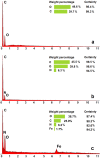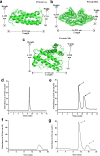A smart temperature and magnetic-responsive gating carbon nanotube membrane for ion and protein transportation
- PMID: 27535103
- PMCID: PMC4989442
- DOI: 10.1038/srep32130
A smart temperature and magnetic-responsive gating carbon nanotube membrane for ion and protein transportation
Abstract
Carbon nanotube (CNT) nanoporous membranes based on pre-aligned CNTs have superior nano-transportation properties in biological science. Herein, we report a smart temperature- and temperature-magnetic-responsive CNT nanoporous membrane (CNM) by grafting thermal-sensitive poly(N-isopropylacrylamide) (PNIPAM) and Fe3O4 nanoparticles (Fe3O4-NPs) on the open ends of pre-aligned CNTs with a diameter around 15 nm via surface-initiated atom transfer radical polymerization (SI-ATRP) method. The inner cavity of the modified CNTs in the membrane is designed to be the only path for ion and protein transportation, and its effective diameter with a variation from ~5.7 nm to ~12.4 nm can be reversible tuned by temperature and magnetic field. The PNIPAM modified CNM (PNIPAM-CNM) and PNIPAM magnetic nanoparticles modified CNM (PNIPAM-MAG-CNM) exhibit excellent temperature- or temperature-magnetic-responsive gating property to separate proteins of different sizes. The PNIPAM-CNMs and PNIPAM-MAG-CNMs have potential applications in making artificial cells, biosensors, bioseparation and purification filters.
Figures








Similar articles
-
Surface modification of hydroxyapatite nanoparticles with thermal-responsive PNIPAM by ATRP.Macromol Biosci. 2009 Dec 8;9(12):1237-46. doi: 10.1002/mabi.200900256. Macromol Biosci. 2009. PMID: 19899073
-
Preparation of protein nano-objects by assembly of polymer-grafted proteins.Colloids Surf B Biointerfaces. 2016 Dec 1;148:503-510. doi: 10.1016/j.colsurfb.2016.09.032. Epub 2016 Sep 23. Colloids Surf B Biointerfaces. 2016. PMID: 27686514
-
A novel thermal and pH responsive drug delivery system based on ZnO@PNIPAM hybrid nanoparticles.Mater Sci Eng C Mater Biol Appl. 2014 Dec;45:524-9. doi: 10.1016/j.msec.2014.09.031. Epub 2014 Sep 18. Mater Sci Eng C Mater Biol Appl. 2014. PMID: 25491860
-
PNIPAM grafted surfaces through ATRP and RAFT polymerization: Chemistry and bioadhesion.Colloids Surf B Biointerfaces. 2017 Mar 1;151:143-155. doi: 10.1016/j.colsurfb.2016.12.007. Epub 2016 Dec 7. Colloids Surf B Biointerfaces. 2017. PMID: 27992845 Review.
-
Mechanical properties of PNIPAM based hydrogels: A review.Mater Sci Eng C Mater Biol Appl. 2017 Jan 1;70(Pt 1):842-855. doi: 10.1016/j.msec.2016.09.081. Epub 2016 Sep 30. Mater Sci Eng C Mater Biol Appl. 2017. PMID: 27770962 Review.
Cited by
-
State of the art on the separation and purification of proteins by magnetic nanoparticles.J Nanobiotechnology. 2023 Oct 4;21(1):363. doi: 10.1186/s12951-023-02123-7. J Nanobiotechnology. 2023. PMID: 37794459 Free PMC article. Review.
References
-
- Bhushan B. Biomimetics: lessons from nature-an overview. Philos. T. R. Soc. A 367, 1445–1486 (2009). - PubMed
-
- de la Escosura-Muňiz A. & Merkoci A. Nanochannels preparation and application in biosensing. ACS Nano 6, 7556–7583 (2012). - PubMed
-
- Hou X. & Jiang L. Learning from nature: building bio-inspired smart nanochannels. ACS Nano 3, 3339–3342 (2009). - PubMed
-
- Hou X., Guo W. & Jiang L. Biomimetic smart nanopores and nanochannels. Chem. Soc. Rev. 40, 2385–2401 (2011). - PubMed
-
- Hou X., Zhang H. & Jiang L. Building bio-inspired artificial functional nanochannels: from symmetric to asymmetric modification. Angew. Chem. Int. Edit. 51, 5296–5307 (2012). - PubMed
Publication types
MeSH terms
Substances
LinkOut - more resources
Full Text Sources
Other Literature Sources
Research Materials

